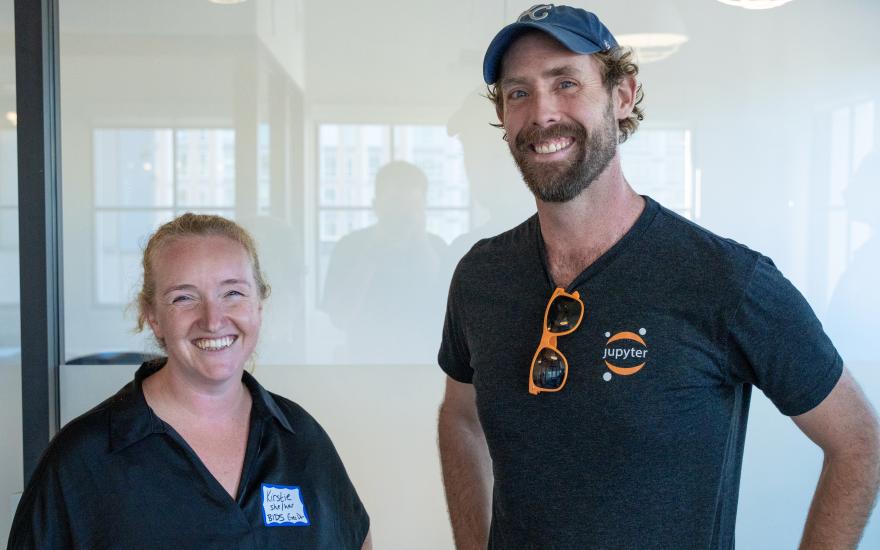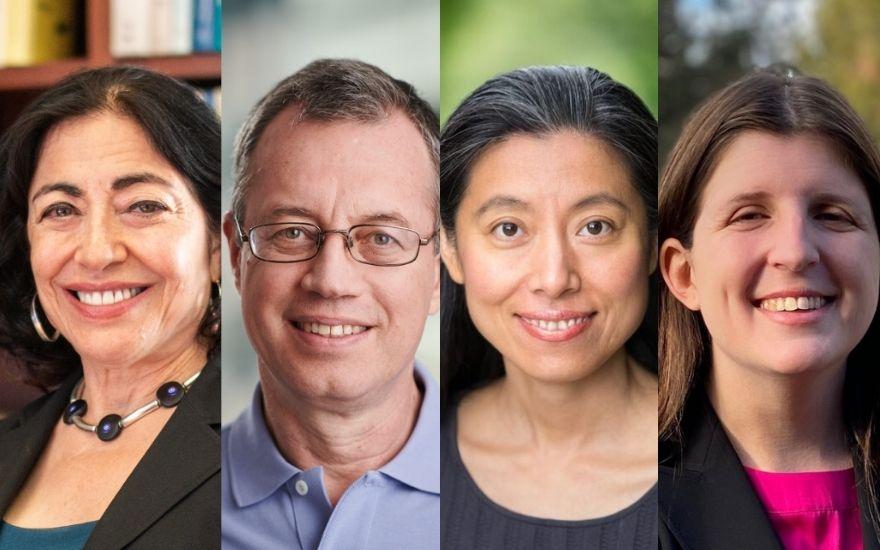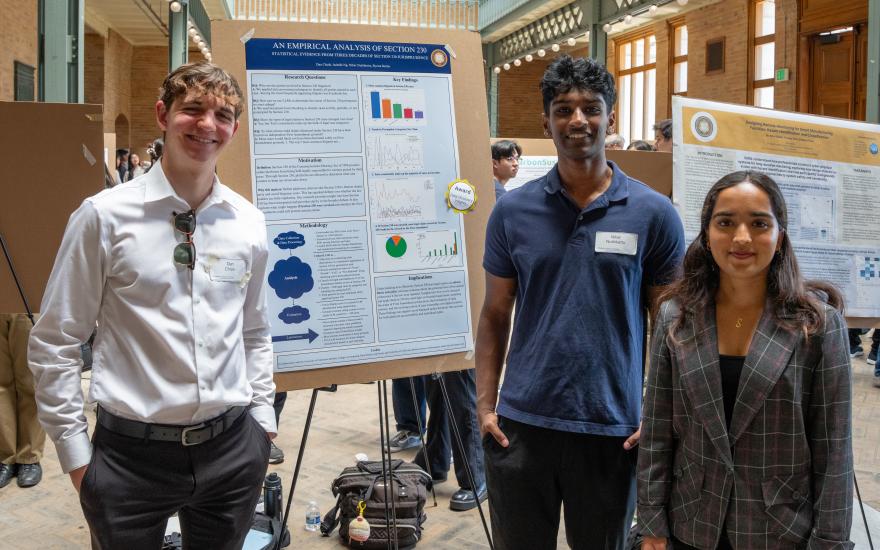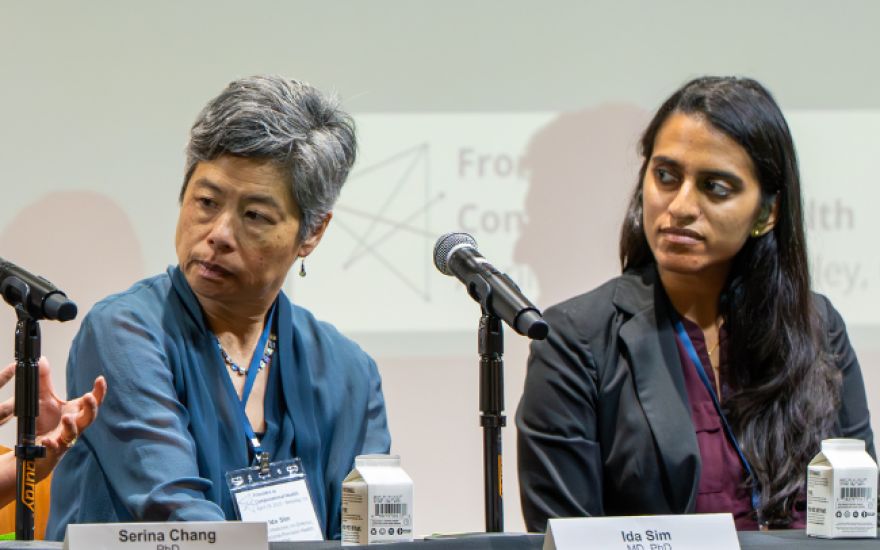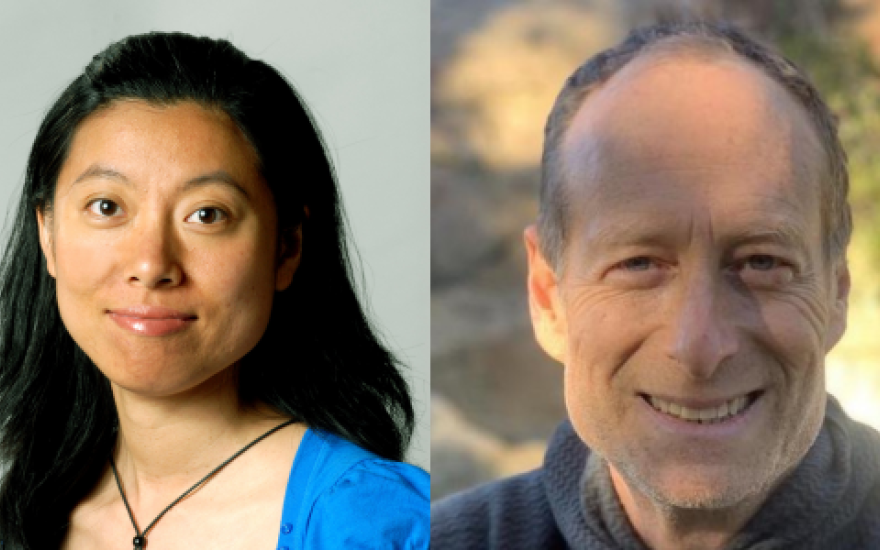Sam Pottinger spent years turning the latest advances in artificial intelligence and machine learning into models and dashboards that supported decision-making at Silicon Valley technology companies. At UC Berkeley, he's building those kinds of tools to turn quality environmental science into accessible, actionable information.
That's the idea behind the new Global Plastic Policy Tool, an open-source, interactive model where users can explore regionalized data about the production, use and fate of plastic and the effectiveness of potential policies world leaders could use to eradicate related pollution.
Working with plastic experts at UC Santa Barbara, Pottinger and others from Berkeley's Eric and Wendy Schmidt Center for Data Science and Environment (Schmidt DSE) harnessed cutting-edge technology to make the expected impact of international policy on plastic pollution understandable and useful to global officials as they work to eliminate it by 2040.
“Part of what we've hoped to be able to do here is give some of these data mechanisms to the folks that wouldn't normally have access to it,” said Pottinger of the intended impact of the tool ahead of November’s United Nations plastic treaty negotiations in Nairobi, Kenya. “It lets you respond to proposals in a way that gives you space to have that deeper conversation without getting railroaded by someone else's perspective.”

The AI-powered tool designed by Schmidt DSE, Santa Barbara’s Benioff Ocean Science Laboratory and others has already been used by international policymakers to inform their advocacy for the Kenya talks. The team is in Nairobi this week sharing with countries from around the world the pathway this tool and research illuminates towards ending plastic pollution.
Early interest in this tool underscores the importance of available and approachable environmental data for the public, a common challenge Schmidt DSE hopes to help solve for more than plastic policy. The center, which launched a year ago, is working on five data collaborations that address urgent climate and equity issues and empower changemakers with actionable information.
"We can't walk without tripping over a new use of artificial intelligence. Yet too often we are using these amazingly powerful tools for frivolous applications, like funny selfie filters or targeted sales -- not for fixing the mega-crises that people and planet are facing," said Douglas McCauley, co-director of Schmidt DSE and an associate professor at Berkeley and Santa Barbara. "In Schmidt DSE, we want to harness the power of these tools to help create solutions to the climate crisis, extinction crisis, and crises of human environmental injustices."
"Doing world-class research, but making sure that this research makes our world better," said McCauley. "That is the idea and that is the Berkeley way."
Schmidt DSE was developed through a partnership between Berkeley’s College of Computing, Data Science, and Society (CDSS) and the Department of Environmental Science, Policy, and Management at Rausser College of Natural Resources.
Increasing access and enabling effective decision-making
As of 2021, humankind had produced 11 billion metric tons, or 1.6 billion tons of elephants, said Roland Geyer, an author of the paper and partner on the tool. People manufacture about 450 million metric tons of new plastic each year, half of which gets used for a short time and then discarded, he said. Plastic also isn’t biodegradable and recycling it hasn’t been successful so far, he said.
All of this translates to, as the United Nations has called it, “a serious environmental problem at a global scale, negatively impacting the environmental, social and economic dimensions of sustainable development.” The UN will hold its third meeting in Nairobi starting Nov. 13 aimed at writing an international, legally-binding treaty by the end of 2024 that would end plastic pollution.
With this new tool, the University of California team found that continuing on our current path, the world would produce nearly 22% more plastic and 60% more plastic pollution waste annually by 2050. Using the right policies, however, the international community could cut mismanaged waste by 89% and nearly meet their goal of eliminating plastic pollution by 2040.
“Our findings support the call for an ambitious global plastics treaty,” Geyer said on a Schmidt DSE - Santa Barbara webinar introducing the tool ahead of Nairobi. “Swift and robust policy action is urgently needed.”
This tool quantifies for decision-makers, advocates and industry the current amount of plastics in each part of the lifecycle by global region, using a groundbreaking dataset that aggregates and models data from industry, governments and other sources. It also harnesses a novel integration of AI in policy impact forecasting for the plastics system. It predicts the impact of potential interventions – like capping the amount of plastic produced to 2025 levels – that could cut down on pollution in the future. Users can see the combined effects of possible policies, too.
Officials from U.S. and other governments, as well as experts from various research groups and plastic production companies, have already engaged with the tool, said Pottinger. This data could help level the playing field by offering a tool, McCauley said.
“We hope that the transparency and clarity that the data can provide will help us get to that high ambition – a pathway that it's very clear we need to get to if we're going to actually end plastic pollution forever,” said McCauley.
“We hope that the transparency and clarity that the data can provide will help us get to that high ambition – a pathway that it's very clear we need to get to if we're going to actually end plastic pollution forever.”
Plastic data gaps and accountability
The mass of plastics is not always the only or most important measurement to consider, however, team members said. Interventions could have environmental benefits like reducing related greenhouse gas emissions or health benefits like reducing toxicity levels, which aren’t currently quantified in the tool.
While some data like those on environmental impacts could be added later, some data simply don’t exist, said Nivedita Biyani, a researcher at Santa Barbara. For example, there is a dearth of plastic waste data for many countries and regions in the world. The team simulated it based on the production data collected, she said.
Having real empirical data is important, said Biyani, who holds a doctorate in civil, environmental and sustainable engineering. Developed countries use most plastic, but small island states struggle the most with vast amounts of improperly disposed of waste via the oceans. Quantifying impacts using reported data could help improve accountability, she said.
“My hope for the future is that all actors – all key stakeholders – play a role in making that [data] available and accessible,” said Biyani, who worked in the waste management space for 13 years. “We could hold all companies and countries accountable in this space to see if they're actually reducing or increasing plastics.”
The plastics tool offers a glimpse at the kind of projects Schmidt DSE hopes to tackle moving forward. It focused on a significant problem with a willing partner where Geyer’s dataset wasn’t yet reaching those who needed it for the negotiations. The team hopes others will use its open source code and science to support their own research or work, increasing the tool’s impact.
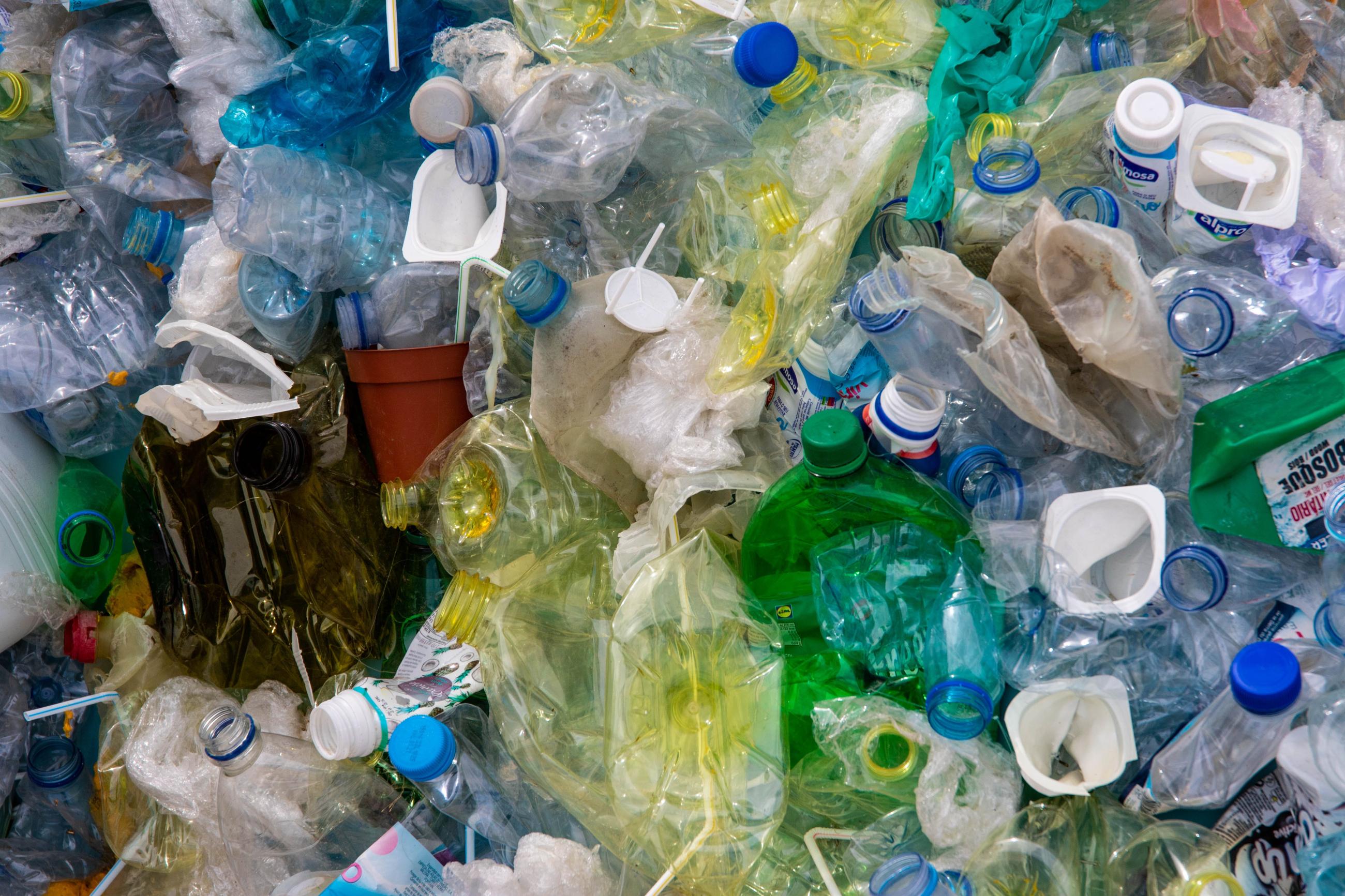
Picking up the baton
Schmidt DSE is working on four other projects that aim to empower stakeholders to address urgent environmental issues. They’re developing data-driven tools with partners like Indigenous tribes, the crop insurance industry and U.S. National Park Service.
Through this work, Schmidt DSE aims to improve wildlife conservation, quantify the benefits of regenerative agriculture, quickly estimate global snow water equivalent, and enable government decision-making about land management in the wake of a fire.
The center is creating cutting-edge AI methods and using existing kinds of tools to solve environmental problems. Schmidt DSE is one of the few organizations charged with building these kinds of tools in public policy and open science spaces, Pottinger said.
“These are tools – AI/ [machine learning] dashboards, interactive media, whatever – that do take resources to build, and because they were expensive to construct a lot of companies don't share,” said Pottinger. “There's a lot that one could do if you're willing to give these kinds of tools to the public commons.”
Schmidt DSE is the right place to help tackle this challenge, McCauley said. It has a core team of 12, including data scientists like Pottinger who wanted to use their skills to address the world's most challenging environmental problems, including climate change.
Being stationed at Berkeley is also crucial to its success, McCauley said. The university is “the epicenter” for open source tool development and cutting-edge data science and AI research, he said. It also has a history of using science to solve problems for people and the planet.
“Our academic ancestors on campus used basic science, like innovations in fertilizers to increase crop yields,” to help society, McCauley said. “Today we are keeping that Berkeley legacy alive, but are now building these environmental solutions using the super-power tools of data science and AI.”

